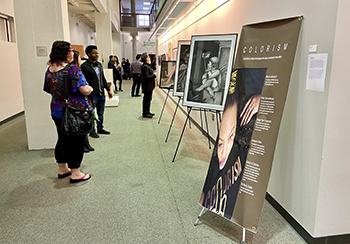Melancholic Temperament
Description/Abstract/Artist Statement
Artist Statement
Melancholic Temperament explores the darker and often unexpressed side of human emotions. Anger, loneliness, and social disconnect are key themes incorporated throughout the series. The scenes are highly staged and deadpan in order to expose a suppressed and unnatural tension within ourselves. Influence for this series stems from my childhood. Growing up, I was often left to care for myself, due to the fact that my single mother worked long days in the military. I often felt disconnected from my family and was not equipped mentally to form social connections with my peers, as I moved constantly. Being alone, and not knowing who to talk to or how to express myself, I learned to suppress these darker emotions. In retrospect, this was toxic to my mental health. If I could give my younger self one piece of advice, it would be to communicate with anyone in regard to how I was feeling. The series is intended to create a discussion about the broader range of internalized emotions. Open discussion about taboo topics, such as the ones explored in this series, may aid in diminishing the stigma surrounding them and give those suffering silently a chance to seek help.
Faculty Advisor/Mentor
Greta Pratt
Presentation Type
Art/Creative Work
Disciplines
Fine Arts | Photography
Session Title
Art Exhibit
Location
Learning Commons @ Perry Library, Art Gallery
Start Date
February 2020
End Date
February 2020
Melancholic Temperament
Learning Commons @ Perry Library, Art Gallery
Artist Statement
Melancholic Temperament explores the darker and often unexpressed side of human emotions. Anger, loneliness, and social disconnect are key themes incorporated throughout the series. The scenes are highly staged and deadpan in order to expose a suppressed and unnatural tension within ourselves. Influence for this series stems from my childhood. Growing up, I was often left to care for myself, due to the fact that my single mother worked long days in the military. I often felt disconnected from my family and was not equipped mentally to form social connections with my peers, as I moved constantly. Being alone, and not knowing who to talk to or how to express myself, I learned to suppress these darker emotions. In retrospect, this was toxic to my mental health. If I could give my younger self one piece of advice, it would be to communicate with anyone in regard to how I was feeling. The series is intended to create a discussion about the broader range of internalized emotions. Open discussion about taboo topics, such as the ones explored in this series, may aid in diminishing the stigma surrounding them and give those suffering silently a chance to seek help.


